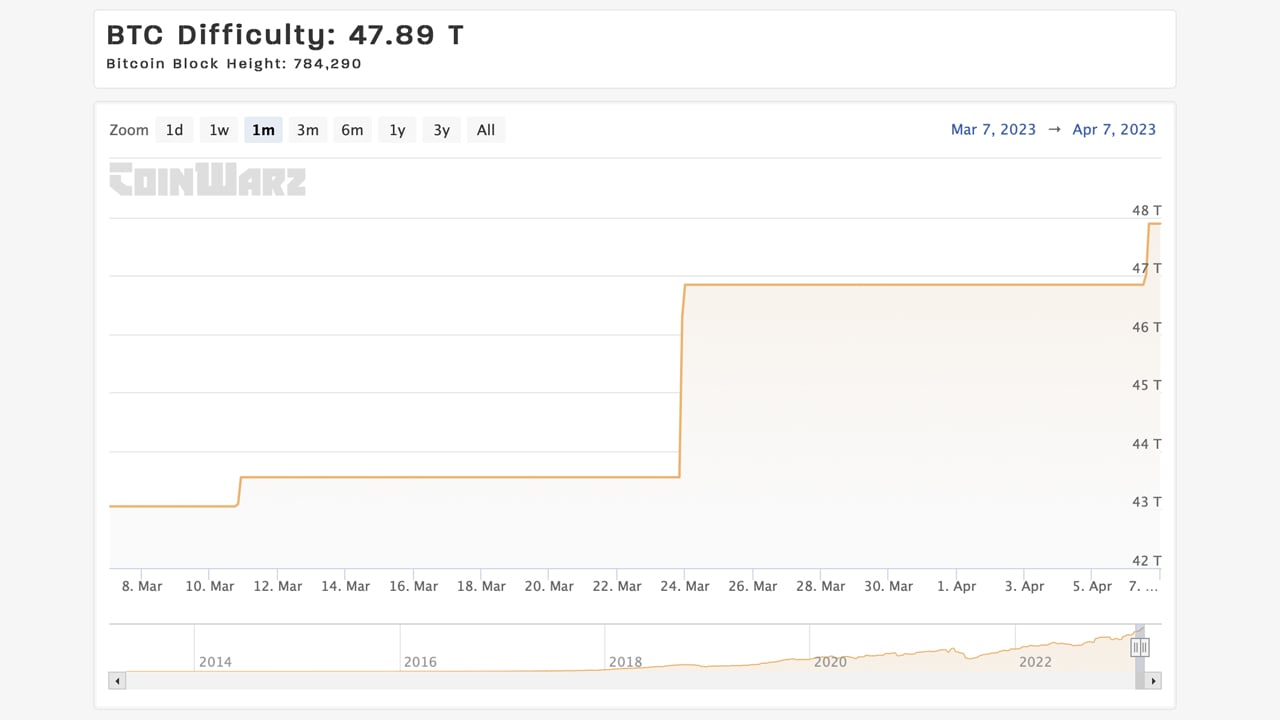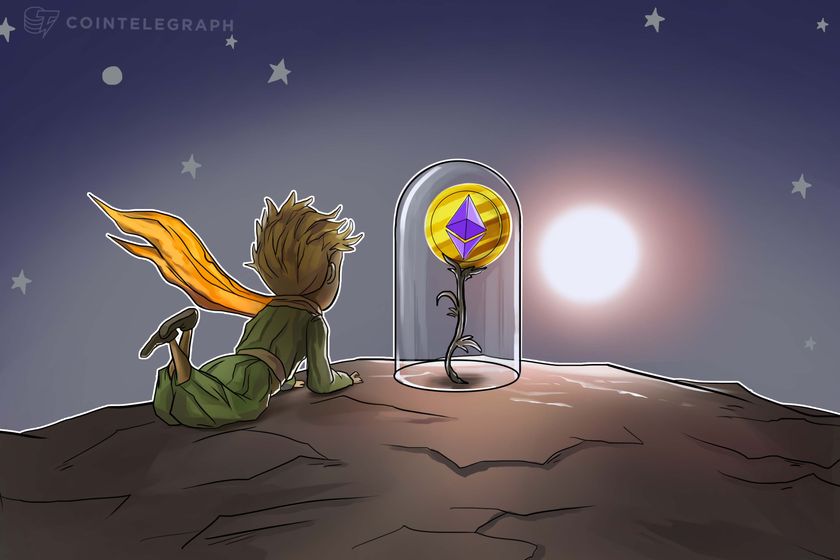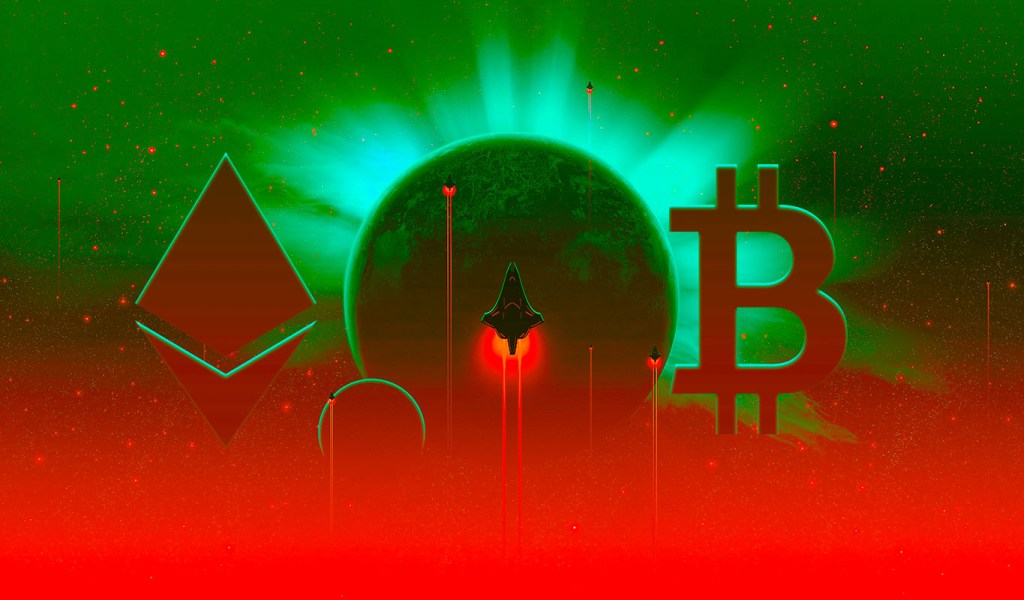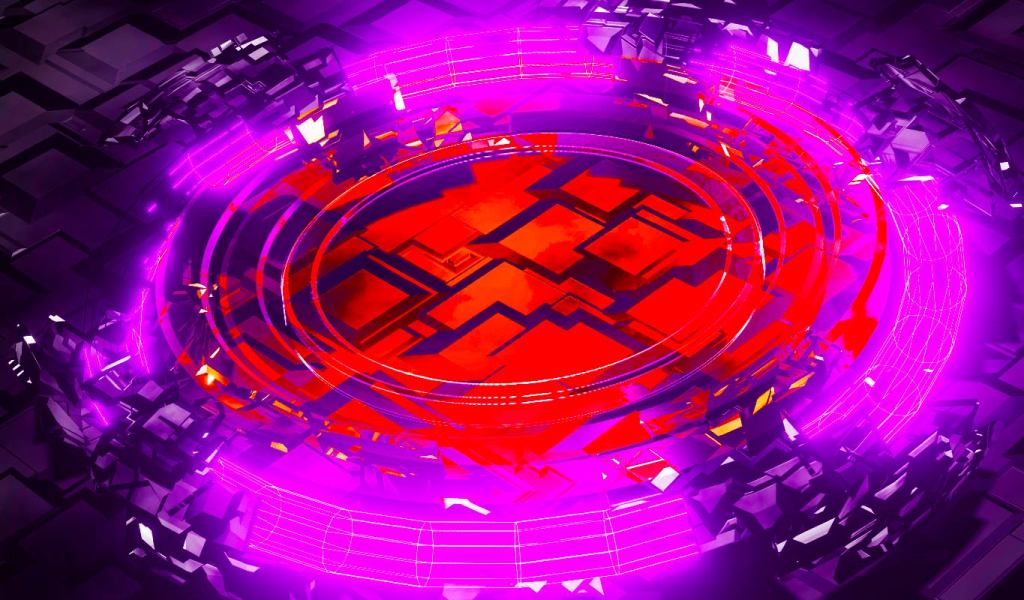
Bitcoin Difficulty Reaches New All-Time High After Fourth Consecutive Increase

On April 6, 2023, Bitcoin’s difficulty rose 2.23% higher at block height 784,224, touching another all-time high. It’s the fourth consecutive difficulty increase on the Bitcoin network since Feb. 24, and the protocol’s current difficulty is 47.89 trillion, which is only 2.11 trillion away from reaching the 50 trillion range.
Bitcoin Difficulty Jumps 2.23% Higher
Bitcoin’s current difficulty of approximately 47.89 trillion is an all-time high, meaning it has never been harder for bitcoin miners to find blocks. The current Bitcoin protocol difficulty level mandates that miners execute roughly 47.89 trillion computations via a trial-and-error approach to discover a cryptographic hash value that fulfills the predetermined criteria for every appended block in the blockchain.
The difficulty rise on April 6 was the fourth increase in the last 41 days or since block height 778,176. The increase on Thursday was 2.23% higher than the previous two weeks, and the level of difficulty will remain at 47.89 trillion until on or around April 20. Despite the difficulty rise, the hashrate is still running high at 340.61 exahash per second (EH/s), and last month, the hashrate tapped 400 EH/s on March 23.

Statistics from coinwarz.com indicate the network reached an all-time high of 414.33 EH/s on March 25, 2023, at block height 782,408. At the current hashrate of 340 EH/s, block intervals are still under the ten-minute mark, at eight minutes and 29 seconds to nine minutes and eight seconds on Thursday evening at 9:30 p.m. Eastern Time.
Over the past three days, 463 blocks were discovered, with Foundry USA finding 159 blocks using 117.66 EH/s, or roughly 34.34% of the global network. Antpool captured 95 blocks over the same period, with 70.30 EH/s, or 20.52% of the network’s hashpower. The average hashrate over the previous difficulty adjustment period was approximately 342.50 EH/s.
What do you think about Bitcoin’s fourth consecutive difficulty increase? Share your thoughts about this subject in the comments section below.
Go to Source
Author: Jamie Redman









